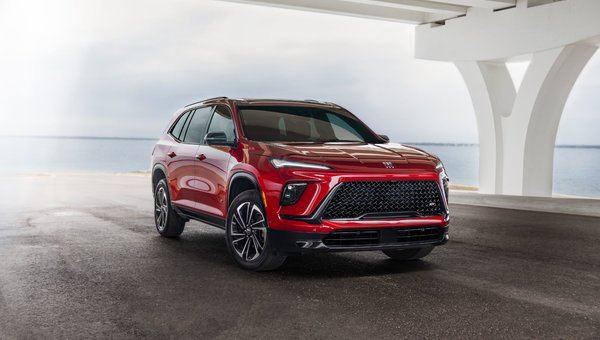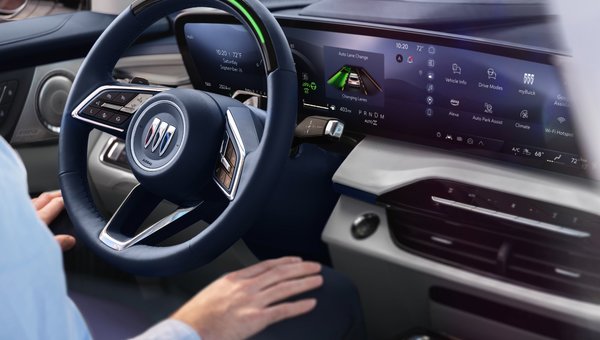Extended Range vs Max Range: Choosing Your 2026 Silverado EV Trail Boss Battery
June 05 2025,

Your Trail Boss delivers serious off-road capability regardless of battery choice, but the right pack transforms how you use your truck. Trail Boss buyers can select Extended Range or Max Range configurations, each designed for different adventure styles and daily driving patterns. Understanding these differences helps you choose the setup that matches your actual needs rather than theoretical maximums.
The decision affects more than driving range. Battery pack selection influences power output, towing capacity, and your truck's overall capability profile. Trail Boss pricing reflects these differences, with Extended Range models starting at $89,499 and Max Range configurations reaching $106,999 MSRP.
Extended Range: The Sweet Spot for Most Trail Boss Buyers
Extended Range delivers 660 km of driving range with enhanced power output that handles demanding situations confidently. This configuration provides 12,500 lbs (5,670 kg) of towing capacity and 2,100 lbs (953 kg) of payload, matching what most Trail Boss owners require for weekend adventures and daily hauling tasks.
The $89,499 starting price positions Extended Range as the value leader in the Trail Boss lineup. You gain all the off-road hardware including the 2-inch lift, 35-inch All-Terrain tires, Terrain mode, and Sidewinder functionality without paying for range you might never use.
Extended Range suits buyers who primarily adventure within 300 km of home base, allowing for round trips with charging reserves. Most provincial parks, ski resorts, and cottage destinations fall within this range from major urban centers.
Max Range: Built for Remote Adventures

Max Range extends your capability to 769 km while adding maximum power output of 725 horsepower and 775 lb-ft of torque. This configuration targets buyers who regularly travel to remote locations where charging infrastructure remains limited or nonexistent.
The additional range covers scenarios like trips to northern fishing lodges, remote hunting camps, or cross-provincial travel with loaded trailers. Max Range also provides the power reserves needed for extended off-board electricity use during multi-day camping trips.
Your $17,500 investment over Extended Range buys 109 km of additional range plus the ability to unlock WOW mode for maximum performance. This premium makes sense for buyers who regularly push their trucks to capability limits.
Power Output Comparison Across Battery Options
|
Battery Pack |
Range |
Peak Power |
Peak Torque |
Towing Capacity |
MSRP |
|---|---|---|---|---|---|
|
Extended Range |
660 km |
Enhanced output |
Enhanced torque |
12,500 lbs (5,670 kg) |
$89,499 |
|
Max Range |
769 km |
725 hp |
775 lb-ft |
12,500 lbs (5,670 kg) |
$106,999 |
Both configurations maintain identical towing capacity, ensuring your Trail Boss handles heavy trailers regardless of battery choice. The power difference becomes apparent during acceleration, hill climbing, and situations requiring maximum performance.
Max Range models include WOW mode as standard equipment, unlocking every available unit of power and torque when conditions demand peak performance. Extended Range configurations provide robust capability for most situations without the additional cost.
Real-World Range Considerations
Advertised range figures reflect optimal conditions that rarely match real-world driving. Towing heavy loads, extreme temperatures, and aggressive off-road use all reduce your actual range regardless of battery pack selection.
Extended Range provides approximately 400-500 km of practical range while towing or during winter conditions. Max Range extends this to roughly 500-600 km under similar circumstances. Your driving patterns determine whether this difference justifies the additional investment.
Cold weather affects all electric vehicles, with range dropping 20-30% during harsh winter conditions. Trail Boss models include battery thermal management systems that minimize these effects, but planning for reduced range remains essential regardless of pack choice.
Charging Strategy Impacts Battery Selection

Home charging capabilities influence which battery pack makes sense for your situation. Extended Range models require roughly 8-10 hours for complete charging using Level 2 home equipment. Max Range configurations need 10-12 hours for full replenishment.
Public fast charging fills either battery pack to 80% capacity in approximately 45 minutes under optimal conditions. Max Range models require slightly longer charging sessions but provide proportionally more range per stop.
Your typical trip patterns determine charging strategy importance. Buyers who primarily charge at home overnight find less difference between configurations than those who rely heavily on public charging networks.
Adventure Profile Matching
Extended Range suits Trail Boss buyers whose adventures center around day trips and weekend excursions within established recreation areas. Provincial parks, ski hills, and most camping destinations remain accessible with comfortable range margins.
Max Range targets buyers who regularly venture into remote territories where return charging options don't exist. Multi-day wilderness camping, remote work sites, and extended touring scenarios benefit from the additional energy reserves.
Consider your actual adventure patterns rather than aspirational plans. Most Trail Boss owners find Extended Range provides ample capability for their real-world use while saving substantial money for camping gear, trailers, or other adventure equipment.
Trail Boss Features Remain Consistent

Your battery pack choice doesn't affect Trail Boss exclusive features. Both configurations include the 2-inch suspension lift, 35-inch All-Terrain tires, Terrain mode, Sidewinder functionality, and hydraulic rebound control as standard equipment.
Exterior styling, interior appointments, and off-road capability remain identical regardless of range selection. You choose based on energy needs rather than feature availability, simplifying the decision process.
Financial Considerations Beyond Purchase Price
Extended Range models offer lower acquisition costs but similar operating expenses compared to Max Range configurations. Electricity costs scale with battery size, but efficiency differences remain minimal between the two options.
Insurance premiums may vary slightly between configurations due to replacement cost differences. Maintenance requirements remain identical, with both packs covered under the same warranty terms and service schedules.
Resale value considerations favor Max Range models in markets where range anxiety affects electric vehicle acceptance. However, Extended Range configurations may appeal to value-conscious used truck buyers who prioritize capability over maximum range.
Making Your Trail Boss Battery Decision
Extended Range serves most Trail Boss buyers effectively while preserving budget for other adventure priorities. Max Range justifies its premium for buyers who regularly operate beyond established charging networks or require maximum power output.
Honest assessment of your driving patterns provides better guidance than theoretical range maximums. Your Trail Boss delivers outstanding off-road capability regardless of battery choice, making either configuration a solid investment in electric adventure capability.
Ready to experience how the right battery pack enhances your Trail Boss ownership? Visit us today at Le Relais Chevrolet!






